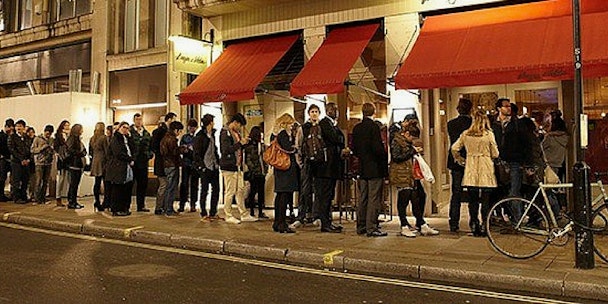Why 'Tom from the office' could be your most effective brand advocate
How many times a day do you hear the world ‘influencer’? Almost as much as ‘millennial’, right?


Let’s face it, if you work in marketing, at some point this year you’re going to encounter the ‘I’ word and you’re going to bank on it doing wonders for your brand. The question is though, are all influencers created equal? And is influence alone enough?
Luckily for us, at Time Out we have a natural pool of influencers, those savvy in-the-know people that always know a better restaurant, a quirkier pop-up or the indiest film to watch. To delve deeper into the depths of the influencer waters, we’ve commissioned a new study: 'From Influence to Action: Insights from the new Influence Economy.'
As marketers, we can all confess to being seduced by the huge reach of the likes of social influencers such as Clerkenwell Boy or Zoella, but what about your ex-housemate Chris, the most foodie person you know, or the gadget nerd taxi driver who chewed your ear off about the latest Samsung handset last night? Time Out’s new research shows that influencers can be split into two distinct typologies, and suggests that brands may have overlooked one of their most valuable assets.
Introducing The Shakers and The Makers
Shakers are the influencers we know and love; the likes of Rosie of The Londoner or The Gentleman Blogger’s Matthew Zorpas, who have huge social followings and are pros when it comes to working with brands. They’ve actively taken the role of advising their followers, sharing their lives and loves with them on a daily basis. These influencers judge their success by the size of their following.
But have you thought about those influential people we all have in our lives that aren’t social media sensations? The ones we turn to for a recommendation of a bar that will impress a first date, or for advice when choosing our next car? We call them Makers, and we think they’re currently being ignored in influencer strategies.
We all have them in our lives. Our research shows that this undervalued breed of influencers have three times as many followers on social media than the average Joe, some much more. But crucially they aren’t motivated by gaining thousands of followers, or a celebrity liking their latest Instagram update. These guys want to make real connections with people. Ultimately, they get their kicks by offering a great piece of advice or recommendation, knowing they’re passing on a pearl of wisdom. Don’t tell the Shakers, but they’re also more knowledgeable.
From Influence to Action
Influencer marketing is evolving as we speak and it’s time we have a fresh look at how to create action-based influence. Whilst it is undeniable that the reach of Shakers is invaluable in raising awareness for your brand, it’s the Makers that are most effective in converting this to a brand’s ultimate objective: action.
Our research found that whilst the shiny-looking Shakers are great for raising awareness on a big scale, they’re actually more likely to be ignored than Makers. Shakers are constantly posting updates on their social channels, which can easily become background noise for their followers who are being bombarded with more messages than ever before. With a more personal connection, Makers are more likely to have their recommendations listened to.
Additionally, while Shakers and Makers are equally as effective in getting people to look into a product, it’s the Makers that are better placed to convert that awareness in to action. In fact, we found that Makers are 23 per cent more effective in giving confidence to consumers to take action. This effectiveness was seen across the spectrum of purchasing decisions, from alcoholic drinks to consumer electronics and holidays.
How can I get my hands on these Makers?
Our study showed Makers are hungry for information, consuming twice the amount of newspaper and magazine content than an average consumer. But to engage these influencers and convert them to advocates, information isn’t enough. It needs to create talkability.
This kind of influencer cares passionately about their interests, so they’re looking to debate it. Makers want to have something to chew on, something worthy of their attention that can agree or disagree with, debate or engage with. That’s how your brand can become one who influences the influencers.
We found that Time Out’s audience consists of a large proportion of Makers (one in three in the UK) and they’re waiting to eat up the best of the city. The journey doesn’t stop there as they share their wisdom with their circle, like magic turning influence into action.
Influencer marketing is a developing and exciting space, with new capabilities to reach consumers with more impact than ever before. The first chapter started with fame and reach, opening up new channels for brands to reach mass market. The next chapter promises a more refined approach, inspiring marketers to open up to the potential of the Maker community.
Influencers are the trusted and personal interpreters of brands, helping consumers navigate the brand landscape. To succeed in the new influence economy, the value of an influencer should not be measured purely on their reach, but their ability to convert that awareness in to action. I urge brands to challenge their existing influencer strategy and question – is my brand influence generating the most impact possible?
Noel Penzer is chief executive of Time Out Group he presented the results of Time Out’s study ‘From Influence to Action’ last night (Monday 18 April) on the IPA Stage at Advertising Week Europe.
